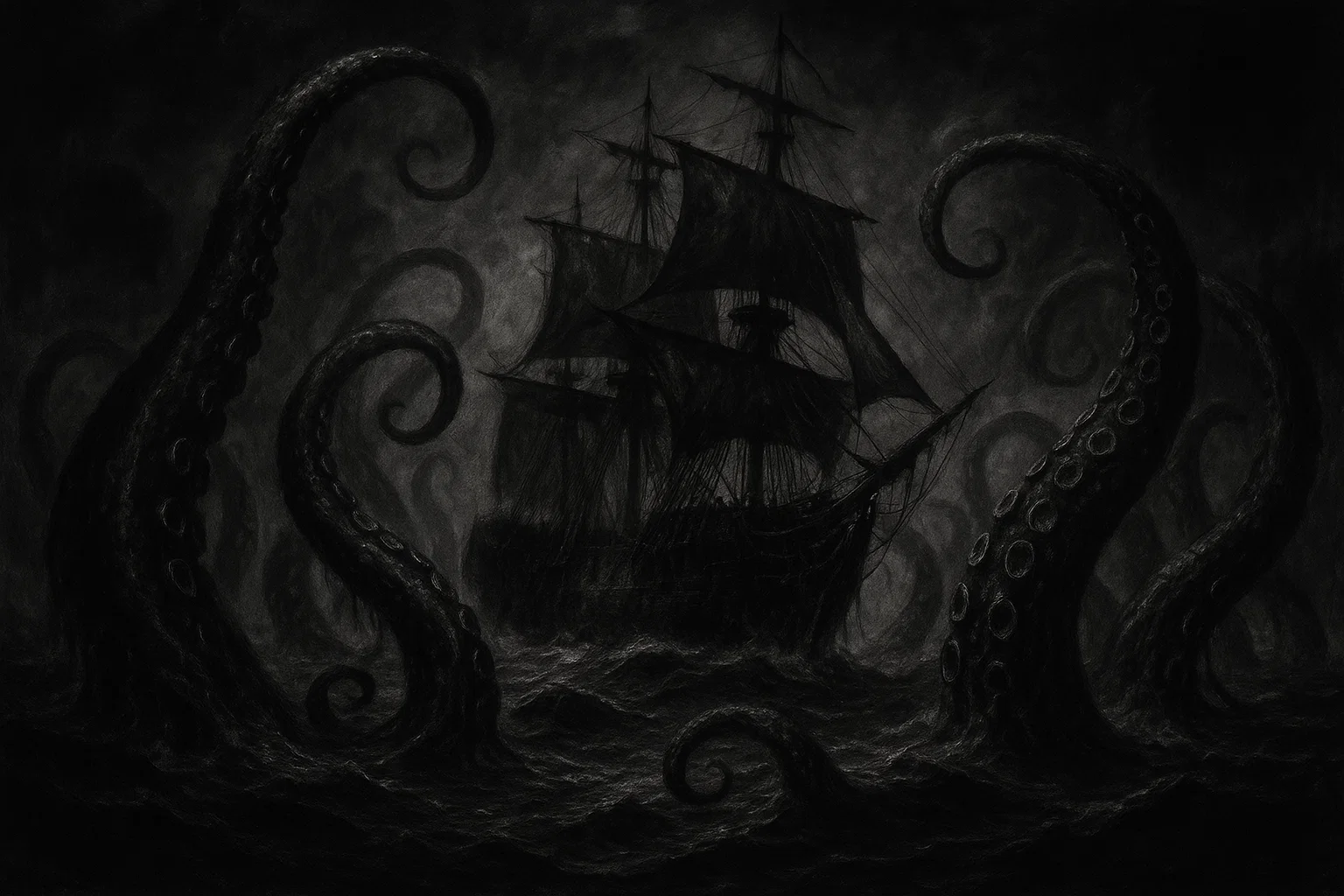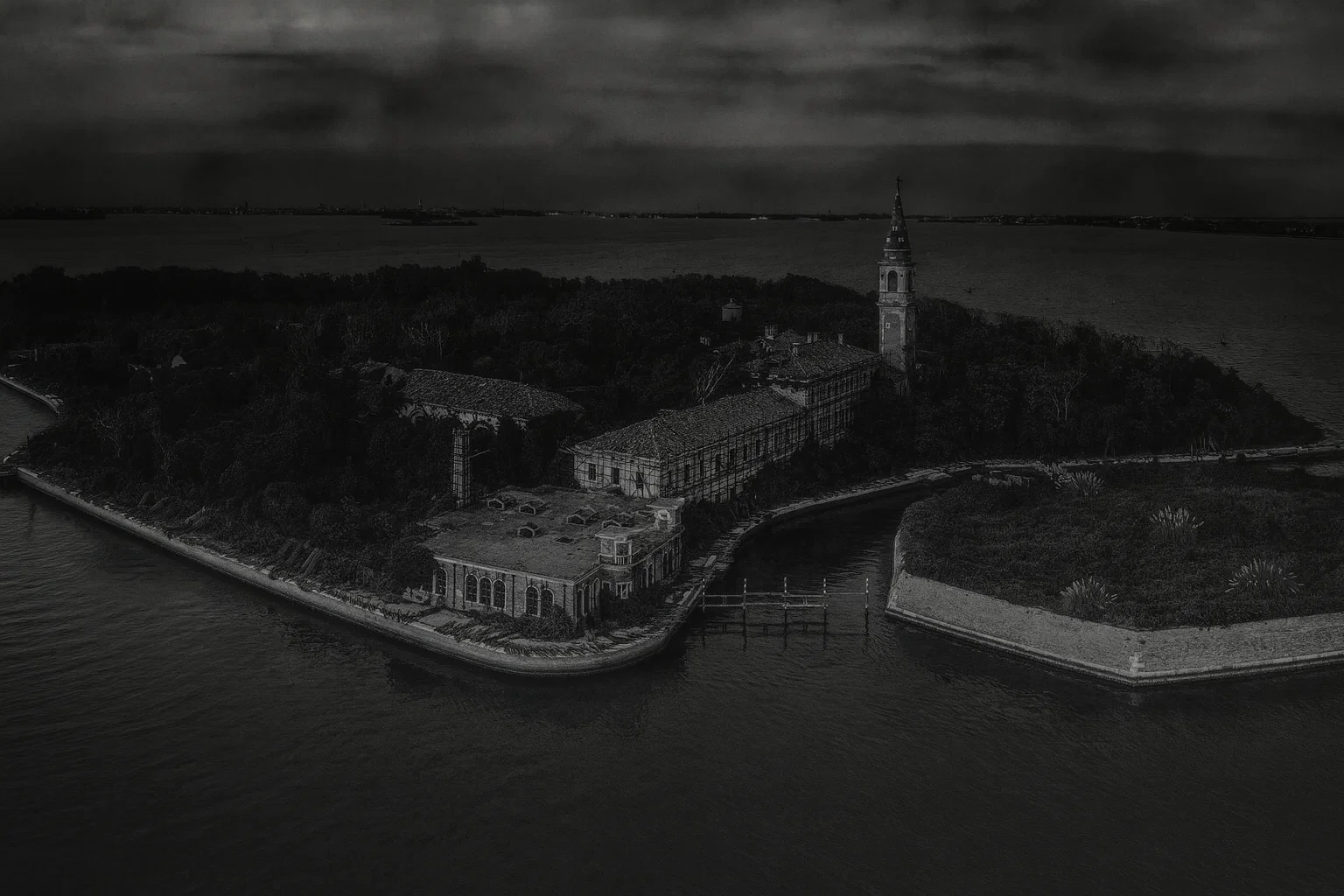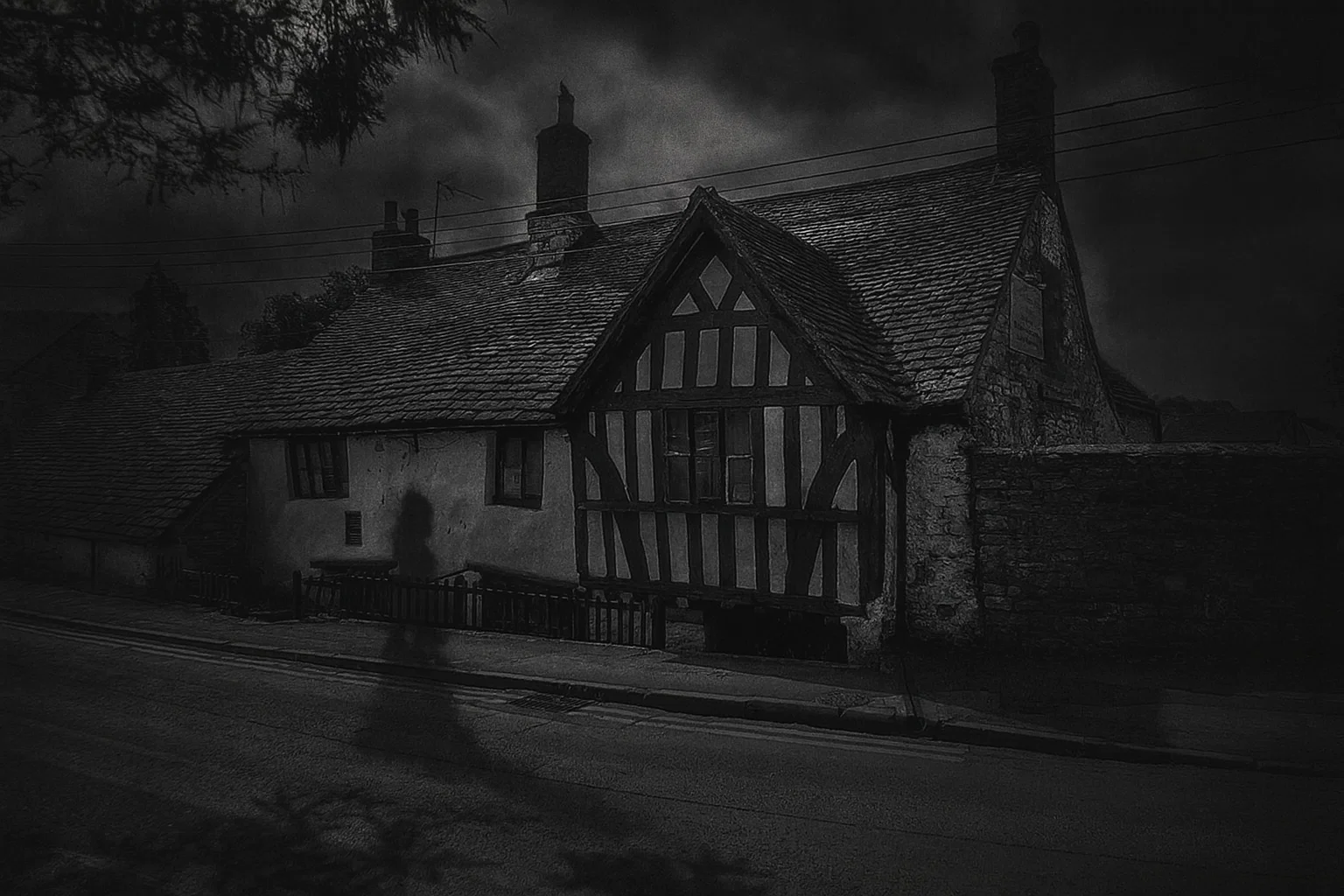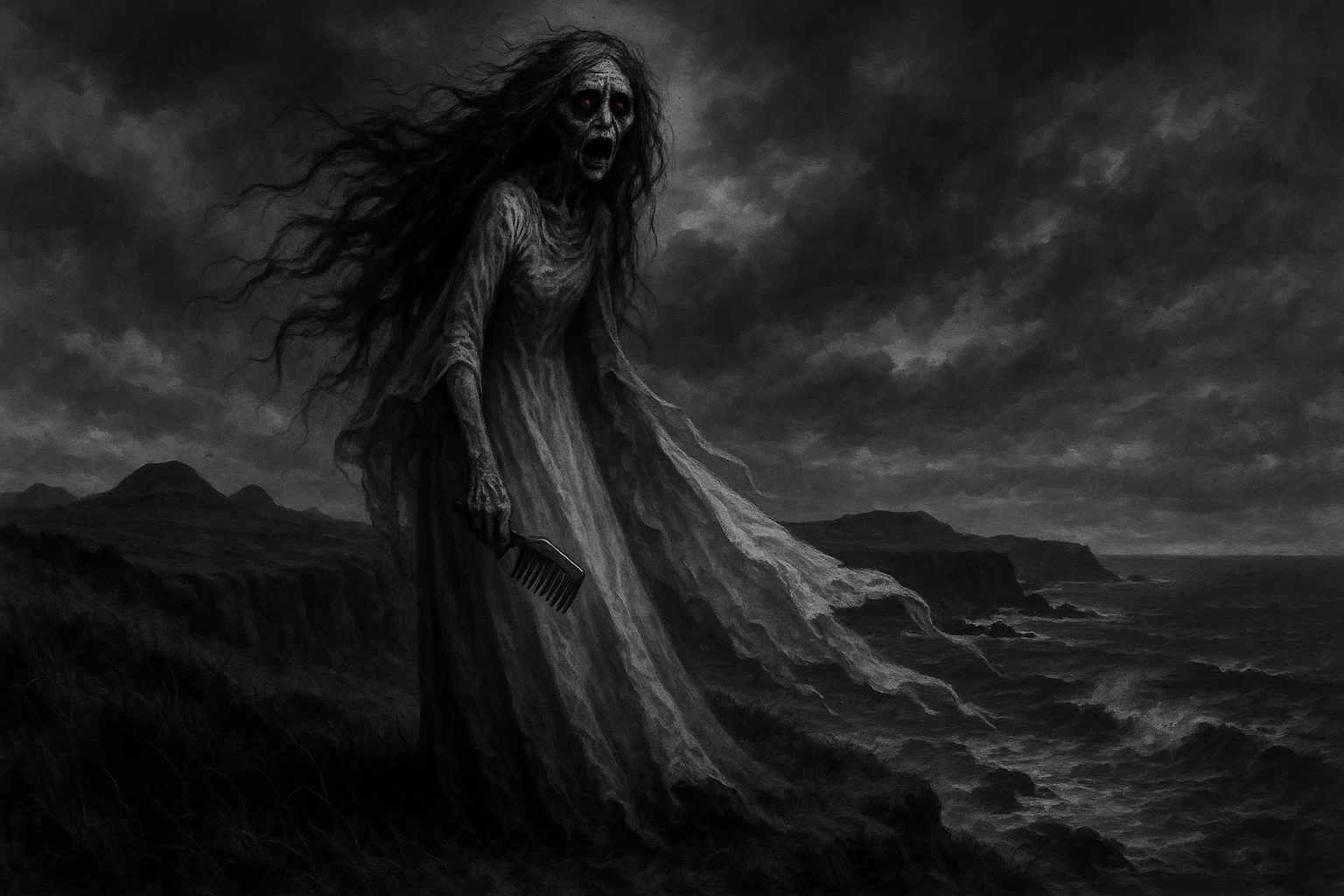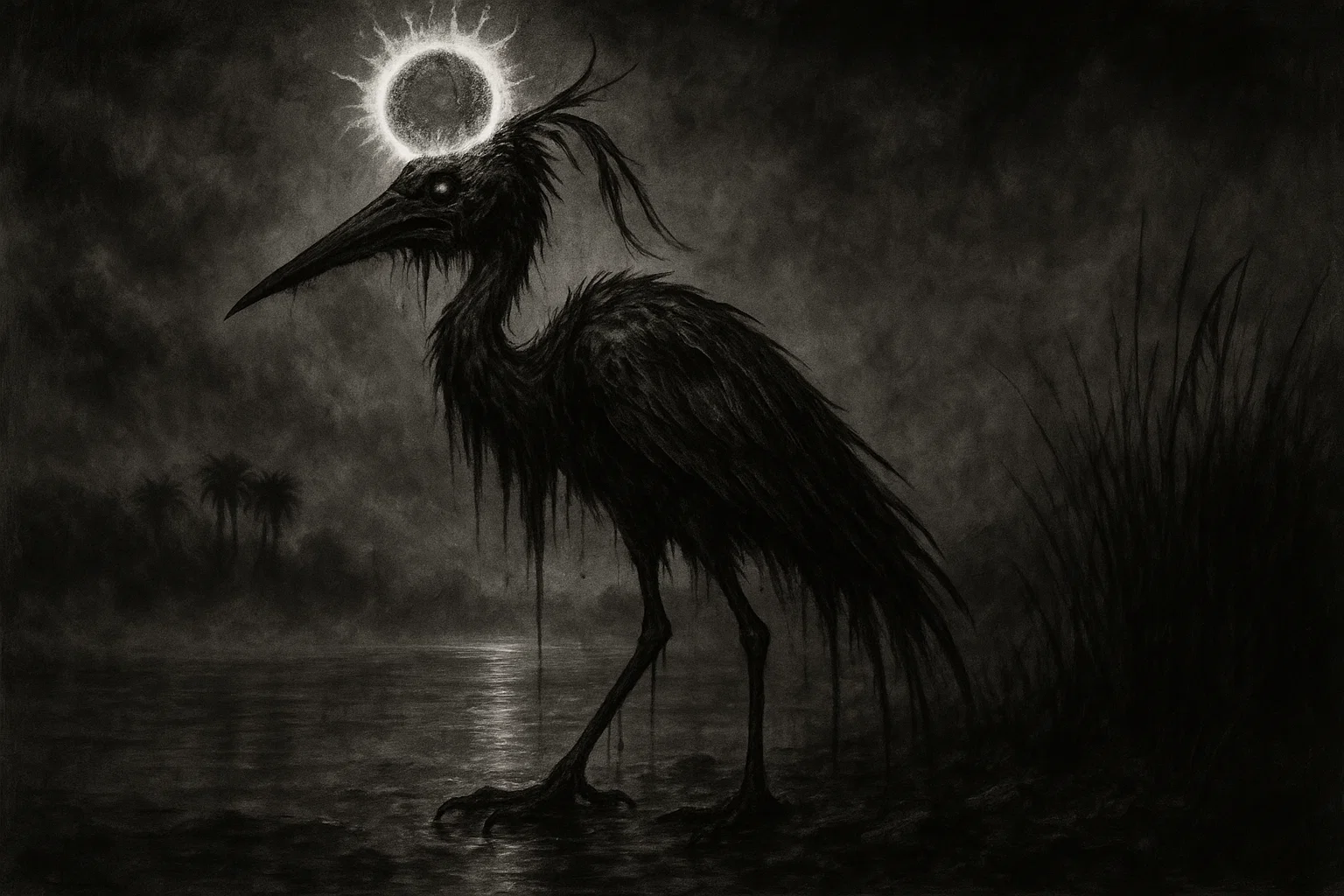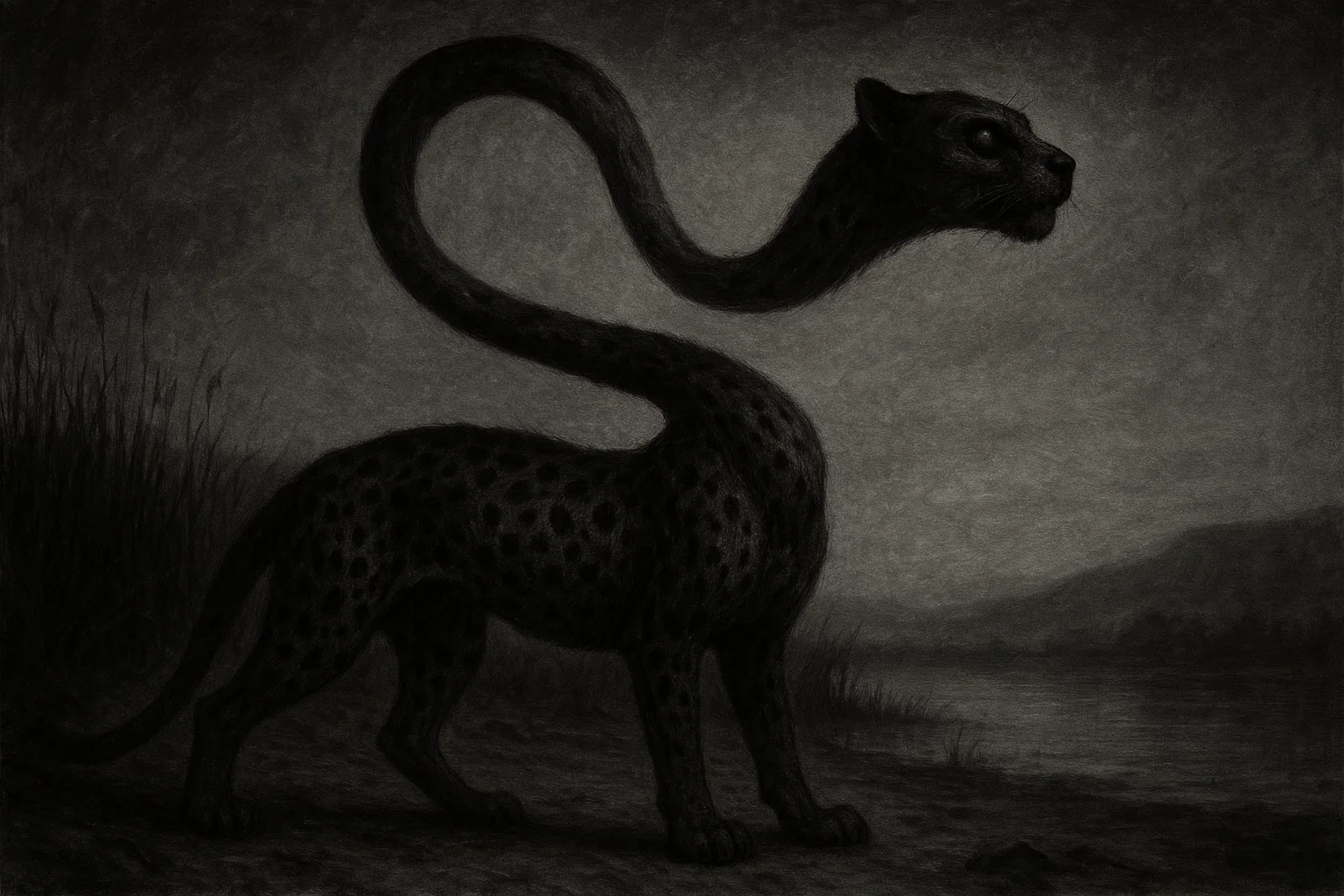The Kraken is a giant sea monster from Scandinavian tales that hides in deep northern waters. It appears in stories from Norway, Iceland, and Greenland, where it grabs ships with long arms and pulls them under.
Sailors described it as a massive squid or octopus, with a body so large it looked like an island. These accounts date back to the 1100s and grew through oral tales and written records.
The Kraken legend likely originates from real sightings of the giant squid, Architeuthis dux. These animals can reach up to 43 feet long, with eyes like plates and tentacles that wrap tightly around prey.
Most likely, fishermen saw parts of these creatures wash ashore and built stories around them. Over time, the mythical Kraken entered books, maps, and later films, showing how myths mix fact and fear of the ocean.
Summary
Key Takeaways
| Attribute | Details |
|---|---|
| Names | Kraken, Hafgufa (sea-mist), Lyngbakr (heather-back), Trollekrabben; From Norwegian krake, meaning “crooked” or “twisted,” tied to Old Norse kraki for malformed shapes; Hafgufa from Old Norse for ocean vapor from its blows. |
| Nature | Legendary cephalopod beast or sea monster. |
| Species | Giant squid-like or octopus-like creature. |
| Appearance | Round flat body up to a mile wide, tentacles or arms like masts with suckers and hooks, eyes size of plates, mouth like a bay; early tales show crab-like spines or multiple heads. |
| Area | Norwegian Sea, Iceland, Greenland, North Atlantic; extends to Baffin Island in some sagas. |
| Creation | From folklore based on giant squid sightings; no god-born or cursed start, but some tales link to magic like sorcerer summons. |
| Weaknesses | Slow surfacing, harmed by harpoons to head or arms, fire on back forces dive; flee fish swarms, whirlpools, or calm spots. |
| First Known | 1180, King Sverre of Norway’s account; 13th century Konungs Skuggsjá details hafgufa. |
| Myth Origin | Norse and Scandinavian seafaring lore, explaining ship losses and ocean events; tied to Viking fears of deep seas. |
| Strengths | Crushes ships with arms, makes whirlpools by circling or diving, lures fish with open mouth or waste. |
| Lifespan | Unknown; implied long-lived or immortal in depths. |
| Time Active | Rises when hungry, often in summer calm before storms; lies still for days. |
| Associated Creatures | Hafgufa and Lyngbakr as kin; global parallels like Scylla, Lusca, Akkorokamui. |
| Habitat | Deep ocean floor, 200-1,400 meters; temperate waters worldwide for real squid basis. |
| Diet | Fish schools, whales, ships’ crews; uses bait to trap prey. |
| Protection | Watch for foam rings or fish boils; avoid anchoring on “islands”; prayers or iron tools in some sailor rites. |
Who or What Is the Kraken?
The Kraken is a huge creature from old Norse stories that waits in the cold sea depths. The monster was blamed for lost boats and strange waves. According to stories, the beast rests at the bottom of the ocean until food draws near, then rises to grab with its reach.
However, the Kraken does not hunt people deliberately; it ends expeditions by mistake (confusing sailors’ boats for large marine creatures, such as whales).
The Kraken is often associated with the northern coasts that were frequented by Viking sailors. This mythical beast is said to mark treacherous areas of the ocean, indicated by peculiar foam circles or clusters of fish that behave erratically, signaling danger beneath the surface.
Ever Walk Into a Room and Instantly Feel Something Watching You?
Millions have used burning sage to force out unwanted energies and ghosts. This concentrated White Sage & Palo Santo spray does the same job in seconds – just a few spritzes instantly lifts stagnation, breaks attachments, and restores peace most people feel immediately.
Etymology
The word “Kraken” comes from the Norwegian “krake,” meaning “something bent” or “unwell” (like a twisted branch). This connects to an Old Norse word, “kraki,” which referred to strange or oversized shapes in nature.
Sailors likely chose this term to describe mysterious sea creatures that appeared to twist and grab, a description that fits the mythical Kraken’s many arms. By the 1700s, the word had entered Danish as “krake,” referring to sick animals, and then entered English through sailors’ travel logs.
In earlier texts, there were different names for similar creatures. For example, in a 1200s book called “Konungs Skuggsjá,” there’s a term “hafgufa,” meaning “sea steam” or “ocean fog,” describing the mist created by a whale. This name referred to a creature that lured and trapped its prey, eventually becoming associated with the Kraken.
Icelandic legends also mention “lyngbakr,” meaning “heather back,” which refers to a whale that is so large it can sink under its own weight. These names are often mixed in stories, with “hafgufa” being used interchangeably with “Kraken” in later writings.
In modern German, “Krake” now means octopus, showing how the language has evolved to refer to real sea creatures.
What Does the Kraken Look Like?
The Kraken is often described as being a massive, round creature that can be as wide as a mile when it spreads its arms. Its back is said to break the surface of the water like land, and it’s often covered in shells or seaweed to blend in.
Its eyes are huge, allowing it to see well in dark waters, and its mouth is wide open, resembling a cliff, filled with sharp teeth. The Kraken has many thick arms, like tree trunks, with suckers or barbs to grasp its prey.
In older illustrations, it appears somewhat crab-like, having spiny legs or armor. More recent depictions show it looking more like a squid, with eight to ten long tentacles that can stretch and curl. Its skin is dark and shiny, helping it blend into the ocean depths, and it can release ink or slime when it attacks.
Some claims say it doesn’t have a clear head or tail, appearing more as a pulsating mass that floats and strikes.
You May Also Like: 10 Scary Campfire Stories That’ll Keep Everyone Awake All Night
Mythology
The vast, uncharted waters of the Norwegian Sea, Iceland, and Greenland spawned tales of monsters to explain shipwrecks, rogue waves, and vanishings in fog or storm. The Kraken became a symbol of the sea’s untamed power, a creature that embodied the terror of the deep for communities reliant on fishing and trade.
The earliest known reference to a Kraken-like creature appears in 1180, in the writings of King Sverre of Norway. He described a massive sea beast encountered during a naval battle, a “great fish” with a back so vast it blocked sunlight and stirred waves that rocked his fleet.
This account, preserved in chronicles, framed the creature as a divine or natural force, possibly sent to aid or hinder warriors. It lacked a name but carried traits later tied to the Kraken: immense size, disruptive power, and a tendency to sink ships unintentionally.
By the 13th century, the Konungs Skuggsjá (King’s Mirror), a Norwegian educational text, provided a more detailed account of a sea monster called hafgufa. Written around 1250, this manuscript aimed to teach a young prince about the natural world, including the perils of Greenland’s waters.
The hafgufa was described as the largest of sea creatures, with a body that surfaced like an island and a mouth that lured fish with scents or waste. It would lie still on the ocean floor, drawing schools into its jaws before snapping them shut.
Sailors mistaking its back for land would anchor or light fires, only for the beast to dive, dragging men to their deaths in whirlpools. Scholars now link hafgufa directly to the Kraken, as its traits—luring prey, creating currents, and resembling land—mirror later descriptions of the Kraken.
Around the same period, the Örvar-Odds saga (circa 1300) introduced a paired threat: the hafgufa and lyngbakr (heather-back), a whale-like creature with a back covered in seaweed or heather-like growths.
In this Icelandic saga, the hero Oddr encounters both beasts, sent by a sorcerer named Ogmund to trap him. The lyngbakr lures sailors onto its back before sinking, while the hafgufa blocks escape with its gaping jaws and thrashing arms. The tale adds a magical element, suggesting that the Kraken could be summoned or controlled—a rare supernatural twist in its otherwise naturalistic lore.
In the 16th century, the Kraken took on visual form through the work of the Swedish ecclesiastic Olaus Magnus.
His 1539 Carta Marina, a detailed map of the Nordic regions, depicted sea monsters off Norway’s coast, including a tentacled beast with horns and a gaping maw, clearly inspired by sailor tales.
In his 1555 book, History of the Northern Peoples, Magnus described these creatures as enormous fish with “horns like trees” that could seize ships. He noted their habit of surfacing near fishing grounds, attracting cod and herring, only to endanger boats caught in their wake.
By the 18th century, the Kraken entered scientific discourse. In 1735, Carl Linnaeus included it in his Systema Naturae as a cephalopod, naming it Microcosmus marinus, placing it alongside squid and octopuses.
In 1752, Norwegian bishop Erik Pontoppidan’s Natural History of Norway offered the most comprehensive early account, drawing from fishermen’s firsthand reports. He described the Kraken as a mile-and-a-half wide, with arms thick as masts and a body that floated like an island.
Pontoppidan noted its slow rise, the whirlpools it created that could swallow small boats, and its diet of fish and whales. He also recorded a sailor’s tale of cutting free from its grip, adding credibility to its physical threat.
The Kraken’s mythology also spread beyond Scandinavia. In Greenland, missionary Hans Egede’s 1729 accounts echoed Pontoppidan, describing a multi-headed beast with claws that matched Icelandic hafgufa stories.
In the 19th century, global exploration brought parallels from other cultures, such as the Ainu’s Akkorokamui (a giant red octopus) and Polynesian tales of squid-like monsters. These connections suggest the Kraken’s myth grew from shared human encounters with real cephalopods, amplified by the sea’s mystery.
The Kraken’s role in mythology also ties to Viking cosmology, in which the sea was a chaotic force opposed to order. Unlike gods like Thor or monsters like Jörmungandr, tied to Ragnarok, the Kraken lacks a divine role but serves as a practical peril. Its stories taught sailors to read signs—fish swarms, foam rings, or unnatural calms—before venturing far.
You May Also Like: Who Was Jan van Calster? The Man Accused of Werewolf Crimes
Legends
King Sverre’s Battle
In the year 1180, King Sverre of Norway led his fleet into a fierce sea battle near the rocky coast close to Bergen. His longships were filled with warriors who were ready for action as they navigated the rough waters beneath a cloudy sky.
While they chased enemy ships, a lookout spotted something unusual in the bay ahead. The water became calm, and suddenly a huge creature appeared, its back wide as a small hill and dark as wet stone, blocking out the weak sunlight.
Sverre, standing at the front of his ship, called it a “great fish,” unlike anything anyone had ever seen before. His experienced crew felt a wave of fear as they looked at the enormous beast. Realizing it could be a danger, Sverre commanded his men to row with all their might to pass by it, thinking it might help his enemies.
The creature moved, causing ripples that rocked the ships like cradles. Its skin was shiny and covered with shells and seaweed, and a terrible fishy smell filled the air.
Suddenly, two massive arms, as long as ship masts and covered in sharp spikes, broke through the water and reached for the nearest ship. The warriors quickly shot arrows at the creature, and their iron-tipped arrows pierced its tough hide, turning the water dark with blood.
Sverre urged his men, shouting, “Strike and row, or we will end up in the depths of the ocean!” The monster thrashed wildly, its arms flailing as waves crashed over the decks, soaking the warriors and their weapons. One of the ships began to tilt as men clung to their oars while water rushed in.
In a final surge, the creature sank back into the depths, leaving behind swirling foam that tugged at the ships. Sverre’s fleet stayed steady and sailed safely to shore. Later, he wrote about this incredible encounter, warning of the mysterious dangers that lurk in the sea.
Why Do So Many Successful People Secretly Wear a Little Blue Eye?
Limited time offer: 28% OFF. For thousands of years, the Turkish Evil Eye has quietly guarded wearers from the unseen effects of jealousy and malice. This authentic blue glass amulet on a soft leather cord is the real thing – beautiful, powerful, and ready for you.
The King’s Mirror Fish Trap
In a medieval text called the Konungs Skuggsjá, written around 1250 for a Norwegian prince, a scholar described the wonders and dangers of the seas around Greenland. He talked about a huge sea creature known as the hafgufa, which later inspired tales of the Kraken.
This gigantic beast was said to rest on the ocean floor, appearing like a massive stone. With its mouth wide open, it would emit a smell that reminded sailors of either rotten fish or sweet bait, attracting schools of cod and herring. The scholar wrote that it acted like a trap, luring fish in for an easy meal.
Sailors often mistook the hafgufa’s back for a low island, smooth and inviting, with gentle waves lapping at it. After long voyages, some tired sailors would anchor their ships, climb onto this “island,” and start fires to cook or keep warm.
One story tells of a crew that landed on such a spot, and while they were cooking, the creature awoke beneath them. It shook its immense body and dove into the depths, dragging the fire, the men, and their gear down into the dark sea. The water bubbled up with foam, and a whirlpool formed, pulling in anyone left behind.
Örvar-Oddr’s Sorcerer’s Trap
The Örvar-Odds saga, an old story from around 1300, tells the thrilling adventures of a Viking hero, Örvar-Oddr, and his son, Vignir. They were sailing across the icy waters of the Greenland Sea in search of glory and fame.
One day, as a thick fog enveloped their ship, they spotted two mysterious shapes looming in the distance, resembling enormous cliffs.
The first shape, called the lyngbakr, looked like a green, heather-covered island. The crew, tired from their journey, decided to anchor and get some rest on the surface.
However, Vignir had a bad feeling and warned his father to keep sailing, sensing it might be a trap. Ignoring his son’s advice, the crew stepped onto the island, only to find it tremble and begin to sink, dragging half of them into the sea with their terrified screams. Quick-thinking Örvar-Oddr cut the anchor rope and rowed away, angry at the trickery.
As they moved ahead, another terrifying creature appeared—the hafgufa, later known as the Kraken. This monster was gigantic, as big as a village, blocking their path with its enormous, twisted arms.
Its wide mouth gaped open, and its eyes gleamed like shields in the mist. Vignir shouted, “Father, it must be Ogmund’s doing! A wizard’s curse!” Ogmund was the sorcerer responsible for sending these beasts to destroy Örvar-Oddr and his family.
The Kraken lunged at their ship, its massive arms reaching for them, splashing water all over the sails. Örvar-Oddr fired arrows at the beast, while Vignir swung his sword at a tentacle that was brushing against their ship.
The creature roared loudly, sounding like a raging storm, before diving underwater and creating a whirlpool that threatened to pull them towards rocky shores. But Örvar-Oddr skillfully managed the ship, steering them to safety.
Once ashore, they vowed to hunt Ogmund down. This saga portrays the Kraken not just as a terrifying monster, but as a test of a hero’s bravery and strength.
You May Also Like: Sleipnir: The Terrifying Eight-Legged Horse of Norse Mythology
Hans Egede’s Greenland Sighting
In 1729, a Danish missionary in Greenland, Hans Egede, heard fascinating stories from Norwegian settlers and local Inuit about a giant sea creature known as the Kraken.
One of these stories came from a fisherman named Lars, who experienced something extraordinary during a summer fishing trip off the coast of Greenland.
While sailing alone in a small boat looking for cod, Lars noticed that the sea became unusually calm. Suddenly, a large shadow rose beneath the water. When the creature surfaced, it looked enormous—its back was about a mile wide, covered in barnacles and seaweed, resembling a reef.
Curious about this strange sight, Lars paddled closer, thinking he had stumbled upon a great new fishing spot. But then, to his shock, huge arms appeared, as thick as church beams and ending in sharp claws, curling over the edge of his boat.
Filled with panic, Lars grabbed a harpoon and stabbed at one of the creature’s arms, which bled a strange black liquid. The Kraken thrashed about, nearly tipping his boat into the water, and then opened its massive mouth—so wide it looked like a bay.
In a hurry to escape, Lars cut his fishing nets to make his boat lighter and rowed with all his might, shouting prayers to keep himself brave. The Kraken circled around him, its arms crashing through the waves, but eventually slowed down as the black blood spread in the water. Slowly, it sank, leaving behind a circle of foam that pushed Lars’s boat far off course.
Eventually, he reached the shore, his boat damaged but himself safe. In a state of shock, he swore that the creature had “many heads.” Hans Egede recorded this tale, along with similar stories from the Inuit, who described the Kraken as a sea spirit, linking it to other Icelandic legends.
Erik Pontoppidan’s Fisherman’s Struggle
In his 1752 book Natural History of Norway, Bishop Erik Pontoppidan shared a remarkable story told by a sailor named Paul Eg, who had a terrifying encounter with the Kraken off the coast of Norway in 1746.
Paul was out fishing in his small boat on a clear day when suddenly the water became still and calm, only interrupted by little ripples forming circles. Then, something massive began to rise from the depths. It was round and flat, like a giant meadow, and had long arms that broke through the water’s surface.
Paul was frozen in fear as one of those enormous arms, covered in horn-like spikes, wrapped around the side of his boat. The suction from the creature’s suckers scraped against the wood.
In panic, he shouted, “Lord save me from the sea’s grip!” and used a gutting knife to stab at the creature’s arm. Thick, dark blood gushed out, and the Kraken thrashed in anger, lifting Paul’s boat halfway out of the water.
More arms appeared, coiling around the boat like powerful ropes, creating giant waves. Paul managed to cut himself free from one side, but the beast quickly circled
Paul was in big trouble as he fought to escape a giant sea monster. With one side of his boat free, he quickly rowed with all his might, but the creature circled around him, creating a swirling water current that threatened to pull him under.
Its enormous eyes, “big as plates,” stared up at him from below. As the Kraken dove, it dragged a massive amount of water along with it, sending Paul’s boat flying miles away to a rocky shore.
Although his boat was damaged and covered in strange marks, it remained afloat.
You May Also Like: Huldra: The Beautiful Forest Demon of Scandinavia
Kraken vs Other Monsters
| Monster Name | Origin | Key Traits | Weaknesses |
|---|---|---|---|
| Leviathan | Hebrew Bible | Armored sea serpent, fire breath, world-shaker | God’s command, hooks |
| Jörmungandr | Norse mythology | Venomous world serpent, encircles Earth, Ragnarok foe | Thor’s blows, mustelid bite |
| Scylla | Greek mythology | Six heads, devours crews, rock-bound | Hero tricks, arrows |
| Charybdis | Greek mythology | Swirling whirlpool maw, three daily gulps | Safe timing, Heracles’ shots |
| Hafgufa | Icelandic sagas | Lure mouth for fish, island back, slow hunter | Fire wake-up, quick sails |
| Lyngbakr | Norse sagas | Giant whale-isle, sinks under load, heather hide | Spot as false land, no anchor |
| Cthulhu | Lovecraft fiction | Winged tentacle god, mind-bender, city sleeper | Elder signs, boat strikes |
| Megalodon | Prehistoric | Huge shark jaws, speed bursts, tooth rows | Deep cold, human tech |
| Umibozu | Japanese folklore | Bald black giant, wave-maker, faceless | Water offerings, name calls |
| Akkorokamui | Ainu mythology | Red giant octopus, size-shifter, sea god | Gifts, distant honor |
| Lusca | Caribbean lore | Shark-octopus mix, cave ambusher, ink clouds | Torches, cave blocks |
| Te Wheke-a-Muturangi | Maori legends | Maori chief’s octopus foe, multi-armed grappler | Warrior spears, island traps |
The Kraken is a legendary sea creature, comparable in size and strength to other mythical beings like Jörmungandr and Leviathan. While these creatures are often connected to apocalyptic events or tests of the divine, the Kraken remains a natural threat. It doesn’t rely on poison or fire to capture its prey.
Similar creatures, such as Scylla, Akkorokamui, and Lusca, hunt directly. Still, the Kraken adds an interesting twist by creating whirlpools to trap its victims instead of just attacking them.
Other enormous sea creatures like Hafgufa and Lyngbakr trick their prey by pretending to be harmless, waiting for the right moment to strike. Meanwhile, the terrifying Megalodon hunts with its massive teeth rather than its arms, and the fictional Cthulhu affects its victims’ minds rather than physically pulling them in.
Creatures like Umibozu and Te Wheke-a-Muturangi can also create large waves. Still, they require certain rituals to be performed, which the Kraken does not.
Powers and Abilities
The Kraken doesn’t use magic, but its strength comes from the deep ocean life around it, which helps it break wooden boats or pull heavy loads. Sailors have reported that its reach can capture entire fleets, and its strikes can match the force of a strong storm.
Some believe it can smell its food from miles away and only surfaces when it’s ready to feed.
The Kraken’s powers and abilities include:
- Massive Size: This creature is enormous, stretching across the width of islands. Its sheer weight can crush anything in its path, making it easy to set traps for unsuspecting prey.
- Tentacle Grip: It has long, powerful tentacles lined with sharp barbs or suckers. These can break ships apart or even pull in large whales, reaching lengths comparable to those of ships.
- Whirlpool Maker: It can create whirlpools by circling or diving, dragging boats underwater. When it does this, it creates foamy rings as a warning sign.
- Luring Prey: The creature can attract food by releasing enticing scents or even waste. It can trap schools of fish in its massive jaws.
- Adaptability to Depths: This creature thrives in the crushing depths of the ocean. It can float thanks to special light fluids in its body and takes a long time to heal when in cold waters.
- Keen Senses: With special eyes that can see in the dark, it can spot movements from a distance and sense the blood of fish.
- Ink Defense: When threatened, it can release a cloud of ink into the water to escape or obscure its enemies’ vision during a fight.
You May Also Like: The Mare: The Nightmare Monster That Crushes Men in Their Sleep
The Kraken in Modern Culture
The Kraken moved from sailor yarns to wide tales in books and screens. Alfred Tennyson’s 1830 poem shows it sleeps deep, stirred at the world’s close. Herman Melville nods to it in 1851’s Moby-Dick, linking to squid fears. Jules Verne’s 1870 Twenty Thousand Leagues pits Nemo against a close kin, mixing fact with thrill.
Films boost it big. The 1981 Clash of the Titans sets it as Greek wrath, with Zeus’ call to “release the Kraken.” The 2010 redo keeps the line, now a catch-phrase for big unleashes. Pirates of the Caribbean: Dead Man’s Chest, released in 2006, introduces Davy Jones’ pet, a tentacle terror that cracks hulls. It returns in 2007’s At World’s End.
Games put players against it. Assassin’s Creed IV: Black Flag has sea fights with arm grabs. Sea of Thieves lets crews team to cut free from pulls. God of War II turns up the boss-level blade work. Splatoon flips it fun, with squid shifts for ink wars.
Other spots include The Kraken Wakes by John Wyndham in 1953, on deep risings, and China Miéville’s 2010 book, where it cults in London. Sports teams like the Seattle Kraken hockey team have been doing it since 2021. These keep showing how old fears fuel new plays.
Scientific Basis: Giant Squid and the Kraken Myth
Giant squid (known scientifically as Architeuthis dux) can grow up to 43 feet long and have enormous eyes that measure about 11 inches across. These remarkable creatures live deep in the ocean, typically between 700 and 3,000 feet, and are known to be shy and solitary. Interestingly, female squids are larger than males and have arms lined with rings and hooks.
The first scientific evidence of giant squid was discovered in 1857 when a researcher named Japetus Steenstrup identified them based on their unique beaks and limbs.
Stories of giant squids often involve them battling sperm whales, leaving behind telltale scars on their bodies. Some evidence of these battles has been found in areas like Newfoundland and Spain.
While no ships have sunk because of giant squids, legends of their fierce battles and the mysterious nature of their existence have contributed to their mythical status. They possess a special buoyancy system that many believe adds to their allure.
Research from 2020 has revealed insights into their genetic makeup, suggesting their long lineage in the ocean. Since 2004, videos have captured live giant squids, showing them as more elusive hunters than fearsome monsters.
Conclusion
The Kraken has evolved from a figure in ancient Norse legends into a well-known symbol of the sea, representing the ocean’s powerful grip on our imaginations. This legendary creature symbolizes the uncontrollable forces of nature, reminding us of shipwrecks and hidden mysteries beneath the waves.
Today, the Kraken appears in movies and video games, transforming from a source of fear into a character used for fun and excitement. Yet, it still embodies that mysterious allure. Teams and stories adopt the Kraken for inspiration or as a fun twist in their narratives.
As explorers venture into the depths of the ocean, we learn more about squids and other sea creatures, which might help change how we view this legendary figure.

